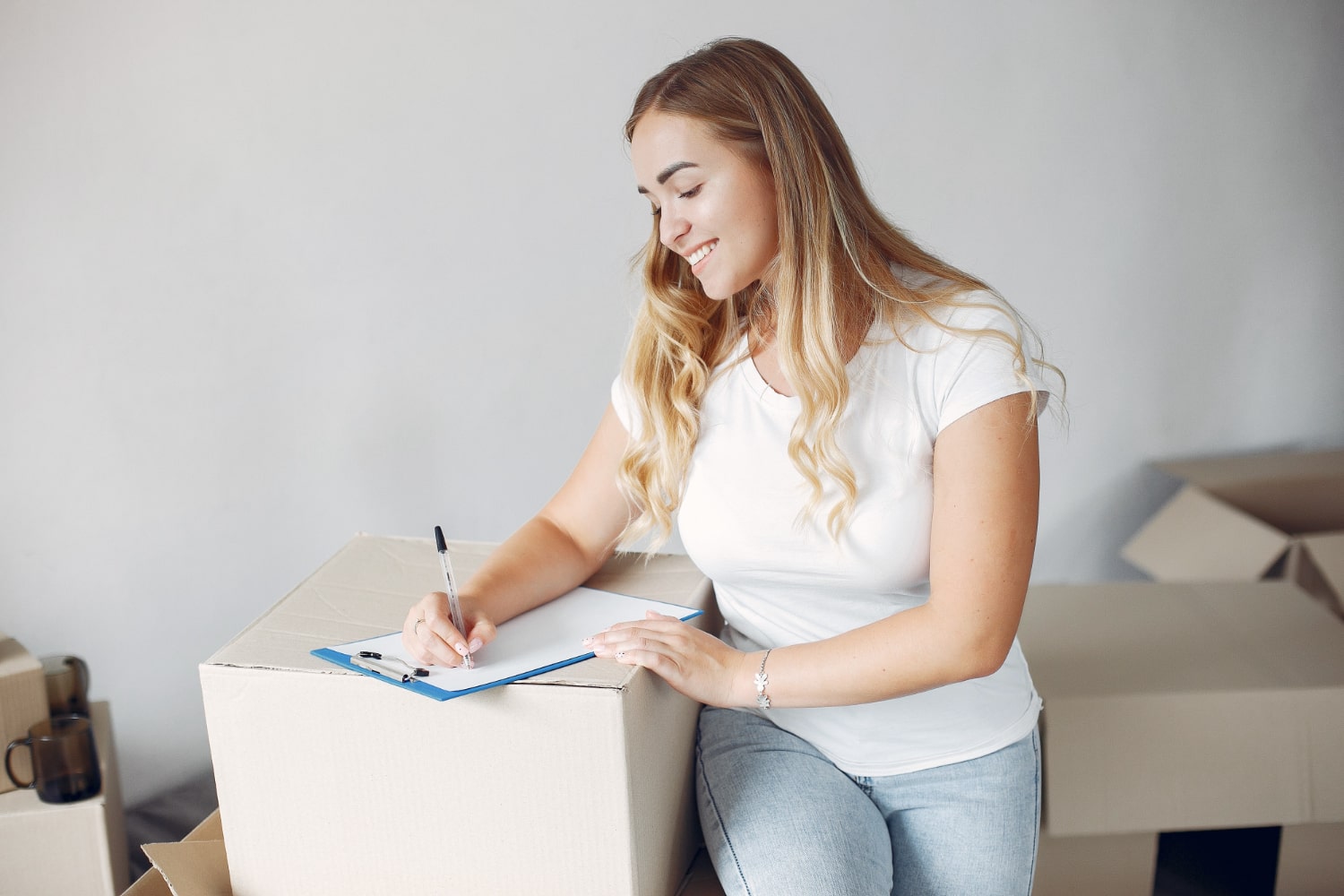
Moving day can feel like a crazy rush, but having a “moving house checklist” can make things much easier. Let’s face it – packing up your life and moving to a new place is stressful, but being prepared really helps. There’s so much to do on moving day – hiring a mover, boxing up your stuff, and dealing with last-minute tasks can wear you out. And things can go wrong, like losing important papers, delays with utilities, or boxes getting damaged. But if you plan ahead, you can avoid a lot of these headaches.
A solid plan helps you handle those other details, cut down on problems, and get settled in your new house without too much fuss. There’s a lot to keep track of, from packing boxes to setting up internet and electricity. If you don’t plan well, you might end up scrambling to find things you need, paying extra fees to movers, or waiting days for services at your new home. Don’t worry though – we’ve got your back.
This guide walks you through everything you need to do before the movers show up. We’ll talk about double-checking with moving companies, getting your paperwork in order, setting up must-have services, and making sure your old place is cleaned up. Plus, we’ll share some expert tips to help you pack and unpack like a pro.
1. Confirm Your Moving Day Plans
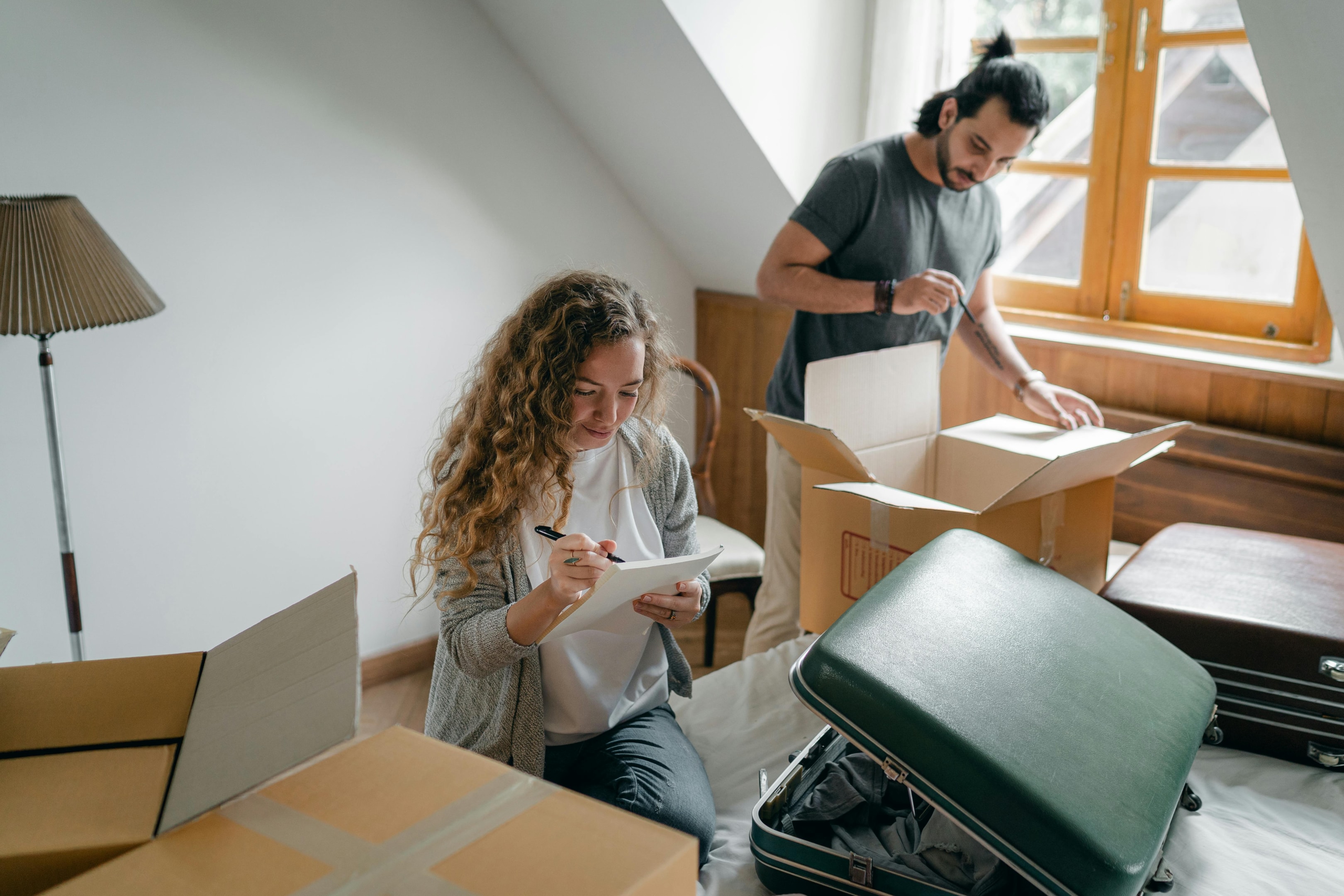
You should have a moving day checklist for instructions at both homes. Think of it as your go-to guide that helps you stay on top of things while ensuring a smooth transition. Having a clear plan in place for your current house and new residence will help you stay organized and ensure that nothing is overlooked. Include details such as:
- A room-by-room breakdown of tasks to complete before leaving the old house.
- Instructions for movers on where is the furniture placement and moving boxes at the new home.
- A list of urgent tasks, such as setting up utilities and unpacking essentials first.
2. Pack Your Essentials Bag
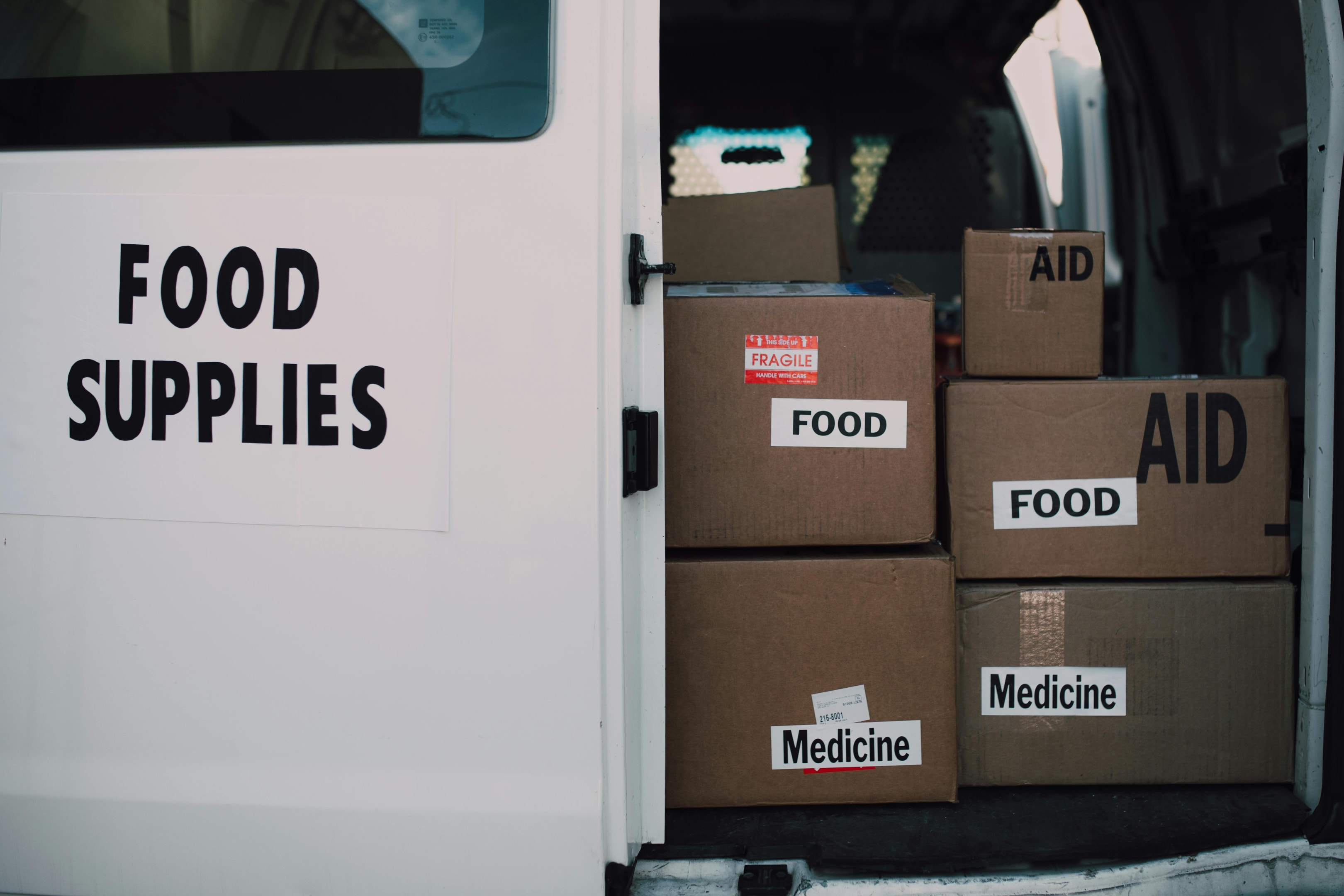
Keep your most valuable and essential items with you during the move, rather than entrusting them to movers. This includes sentimental keepsakes, crucial documents, and irreplaceable belongings. While movers are generally reliable, it’s safer to personally transport items like jewelry, heirlooms, legal documents, passports, and electronic devices. To avoid rummaging through boxes on your first night, pack an “essentials for moving out” bag with:
- Important documents (moving documents, ID, lease agreement, moving contracts)
- Chargers, toiletries, and medications (bathroom necessities)
- Some snacks, coffee, and disposable cutlery
- A change of clothes and bed linens
- Basic tools (screwdrivers, tape, scissors) for quick setup tasks
- Pet supplies if you have animals moving with you
3. Update Your Address and Utilities

A new house moving checklist will help you keep everything running smoothly and prevent missed bills, important letters, or disruptions to services. Updating your address in advance ensures that all your essential mail and subscriptions follow you to your new house without hassle. Make sure you notify:
- All your utility providers (electricity, gas, water, internet) to avoid service disruptions. Schedule the disconnection of your old utilities and activation of services at your old residence before moving date.
- Banks accounts, household insurance companies, and government agencies to ensure you receive important notices. This includes credit card providers, loan institutions, and your employer to keep your financial and employment records up to date.
- Subscription services and loyalty programs to continue receiving deliveries. Update your address with online retailers, meal delivery services, and magazine subscriptions to avoid missing orders.
- Family and friends so they know your new home address. Sending out a quick email, group message, or mailing change-of-address cards can keep everyone informed.
- Australia Post to set up a mail redirection service for at least two weeks to catch any missed updates. This is especially useful while you complete your change-of-address notifications.
- Car registration and any local memberships that require an updated address. This includes updating your driver’s license, vehicle registration, gym memberships, and community organizations.
4. Get Packing Like a Pro

Not sure how to pack for moving house? Packing can be overwhelming, but starting early and following a structured plan and packing tips for moving, will make it much easier. A well-organized packing strategy ensures that unpacking at your new home is smooth and stress-free. Here are some key steps to follow:
- Create a home inventory list for moving in your moving checklist to keep track of all your belongings, especially valuable or fragile items. This will help you stay organized and make unpacking more efficient.
- Label boxes on multiple sides with their contents and the room they belong in. Use color-coded labels or stickers to make identifying boxes easier at a glance.
- Take extra care when packing breakable items. Use bubble wrap, towels, or soft clothing as padding, and place fragile labels on boxes containing breakables. Stack these boxes on top of heavier ones to prevent damage.
- Designate a “Do Not Pack” box with essential items you’ll need on moving day. This can include cleaning supplies, documents, chargers, and a few basic kitchen tools.
- Use small cartons for delicate or heavy items like books, large cartons for bulkier household items, and heavy-duty boxes for kitchenware and other breakables. Avoid overpacking boxes to prevent breakage or injuries.
- Declutter while packing to reduce the moving load. Donate, sell, or recycle items you no longer need. A lighter load means fewer boxes to move and more space in your new home.
5. Make Plans for Pets and Kids

Moving day can be chaotic, and it’s even trickier with little ones or pets running around. If possible, arrange for a friend or family member to look after them so you can focus on the move.
- Set aside pet food, water bowls, and comfort items like toys or blankets.
- Prepare a travel bag with snacks, activities, and comfort items for children to keep them entertained during the transition.
6. Clean Up Your Current House

Before leaving, make sure your old house is cleaned and ready for the next occupants before your moving day:
- Dispose of garden chemicals, cleaning fluids, and air bottles safely according to local regulations.
- Water and pack indoor plants carefully to prevent damage.
- Return any borrowed items to neighbors or friends.
- Patch up minor wall holes or scratches to leave the place in good condition.
- Remove all rubbish and ensure the home is tidy before locking up.
7. Do a Final Walkthrough

Before the removalists arrive, take a last look around to make sure nothing gets left behind. Your moving checklist should include:
- Defrosting the fridge and freezer 24 hours before moving to avoid leaks.
- Checking all storage areas, attics, and garages to ensure nothing is overlooked.
- Locking windows and doors securely to finalize the move-out process.
8. Get Ready for the Moving Truck
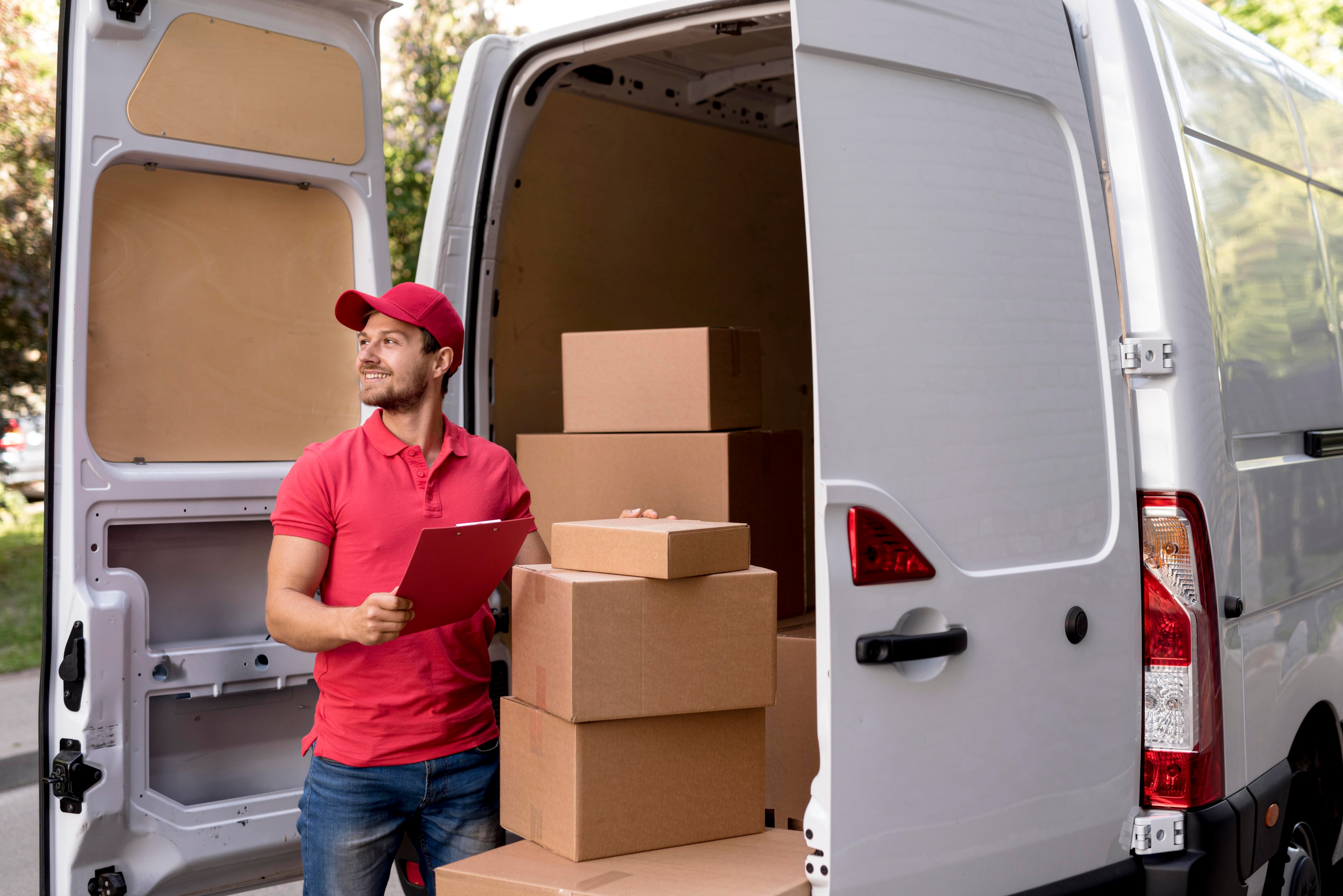
Your hired movers will appreciate a little prep work:
- You should dispose of flammable liquids before moving day. Many moving companies prohibit the transport of hazardous materials, including gasoline, propane, paint thinners, and certain cleaning chemicals. Safely discard these items according to local disposal guidelines to prevent safety hazards during the move.
- Make sure there’s a clear path for moving heavy furniture to prevent delays.
- Reserve a parking spot for the moving van in advance if needed.
- Stack boxes neatly, keeping heavier ones on the bottom and fragile items on top for safe loading.
- Double check with your movers if additional help is needed for large or specialty items. Your movers will appreciate a little prep work to help make the loading and unloading process faster and more efficient:
- Clear the Pathways: Ensure there’s a clear, unobstructed path for moving heavy furniture and boxes. Remove tripping hazards like rugs, clutter, or low-hanging décor to prevent injuries or damage.
- Secure Parking: Reserve a parking spot for the moving van in advance, especially if you live in an apartment complex or a busy street where parking is limited.
- Organize and Label Boxes: Stack boxes neatly, keeping heavier ones on the bottom and fragile items on top. Clearly label each box with its contents and destination room to make unloading easier.
- Check Special Handling Needs: Confirm with your movers if additional help is required for large or specialty items such as pianos, safes, or antique furniture. Provide specific instructions for delicate or high-value pieces to avoid mishandling.
9. Unpack with a Strategy

Once you arrive at your new residence, take a deep breath and start unpacking strategically:
- Unload and open essentials boxes first to make the first night comfortable.
- Focus on setting up key rooms like the kitchen and bedrooms before moving to less critical spaces.
- Cross-check your items with the home inventory list to make sure nothing’s missing.
- Plan your furniture placement ahead of time to avoid unnecessary heavy lifting later.
- Recycle or dispose of packing materials responsibly—flatten and store boxes for future use or donate them.
10. Take Time to Relax After the Move

Moving is a marathon, not a sprint. After the heavy lifting is done, take some time to relax and recharge before diving into the next phase of settling in your new address. Once the essentials are in place, give yourself, friends, and family time to relax and adjust to the new home.
- Set up a cozy corner with familiar items or relax on your favorite furniture to create a sense of comfort.
- Order food or have a simple meal instead of rushing to unpack the kitchen fully.
- Go for a short walk around your new place to explore and get familiar with the neighborhood.
- Take breaks between unpacking to prevent burnout—there’s no rush to have everything perfect on day one.
- Get a good night’s sleep and start fresh the next day with renewed energy.
Key Takeaways
- Plan Ahead: The earlier you start, the less stressful the moving process will be.
- Communicate Clearly: Stay in touch with your removalist company so everything goes smoothly.
- Stay Organized: Keep personal items handy and check off tasks as you go.
Moving can be a stressful experience, but careful planning and organization of house checklist will make the transition smoother. With this ultimate moving house checklist, you’ll be ready to start fresh in your new home with confidence!
Frequently Asked Questions
How far in advance of moving day should I book removalists?
It’s best to schedule and book professional movers at least 4-6 weeks in advance, especially during peak packing and moving seasons.
What should I include in my essentials bag?
Your essentials bag should have toiletries, a change of clothes, basic kitchen items, medications, important documents, and anything you’ll need for the first 24 hours in your new home.
How can I protect my belongings during the move?
Use sturdy moving boxes, label them clearly, bubble wrap breakable items securely, and consider getting home and contents insurance for added peace of mind.


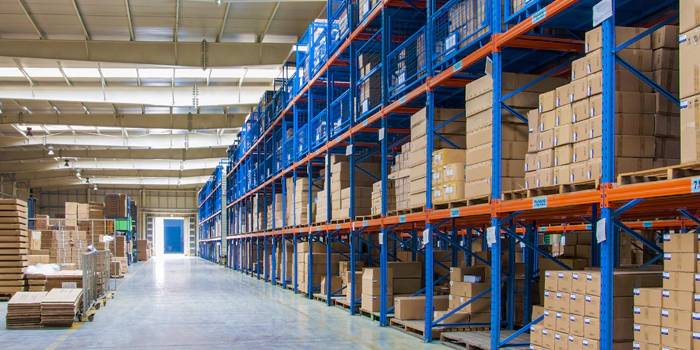

 Address
Address Phone
Phone Email
Email